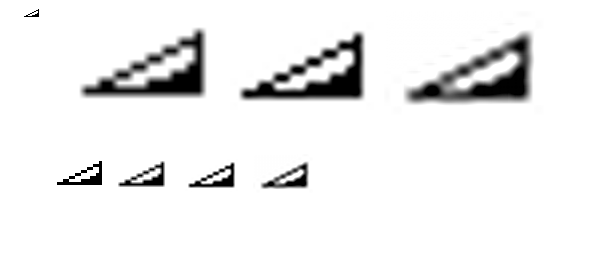First of all, I’d like to read more about “well-known” techniques for reducing laser speckle. But, I’m not sure that I can get to those references from the Stanford space-time research paper. No problem, I can search the Internet instead. I’ve found some very good sources, the first one in particular is the best. The second one describes using a colloidal solution to disperse a laser to reduce speckle. Not particularly interesting for my use cases.
But the second paper does bring up an interesting point. In order to achieve good speckle-free results, 600 different speckle patterns need to be averaged together. So, simply shifting a laser to two different positions does not sufficiently achieve this requirement.
20170430/DuckDuckGo laser speckle reduction techniques
20170430/http://www.siliconlight.com/wp-content/themes/siliconlight/pdf/speckle-spie.pdf
20170430/https://arxiv.org/pdf/1212.5176
There is certainly no shortage of published research papers on lasers, but I think I’ve seen enough to get the idea.
Second note. I can re-design the “crane” in my 3D scanning place mat to be a fold-up system. It could be like the legs on our fold up tables or it could have the diagonal be a sliding component with both edges latched in. Here is a good example design of a fold-up crane, the Western Mule Fold-A-Way Bumper Crane.
20170430/DuckDuckGo western mule fold-up bumper crane
20170430/http://westernmule.com/bumper_cranes.html
Third note. See 2017-04-30-interpol-funcs.png for a quick visual
display of using no interpolation, bi-linear interpolation, bi-cubic
interpolation, and Lanczos 3-lobe interpolation.

These scalings were done in the GIMP. Note that the source image is solely black and white, so you need not worry about gamma here when comparing the interpolation functions. Yeah the target gamma in the scale-up isn’t correct, but the shades are mainly there to help you visualize the interpolated values, so it works out alright in this use case.
So my verdict? Well, it turns out that bi-linear interpolation yields worse results than I anticipated for smoothing out diagonal lines. Somehow I thought the results for 3D scanning might be a little bit better than is the case with 2D images, but I should have known better. Bi-cubic interpolation actually gives worse results than bi-linear interpolation. The Lanczos filter gave rather good results for smoothing out the diagonal line, but it came with the problem of generating a “ringing” a certain distance away from the edge.
I believe it should be possible to tune the Lanczos filter to only use adjacent neighbors, though. Is it? No. In that case, it would just degenerate to a simple bi-linear interpolation.
Definitely, actually, it looks like they used a more sophisticated interpolation algorithm than bi-linear in the Stanford space-time paper. Lanczos interpolation is my best guess, but who knows. They might have used a spline technique, but it definitely looks like they did not use bi-cubic or bi-linear interpolation.
But hey, let’s do another web search just to be sure they’re not using something better when they say “reconstruction.”
20170430/DuckDuckGo reconstruct a continuous function from sampled data
This is a pretty good resource that covers most of what you are looking for in the same computer graphics subject category.
20170430/http://www-cs.ccny.cuny.edu/~wolberg/pub/crc04.pdf
It turns out that Wikipedia has some pretty good information too. Well, it’s very condensed and the gamma issue is not as dramatically stated as in the other resource I referenced. Also, it hasn’t really covered anything new in regard to good filtering algorithms. Kaiser window is another good option to consider in addition to Lanczos window.
20170430/https://en.wikipedia.org/wiki/Reconstruction_filter
20170430/https://en.wikipedia.org/wiki/Reconstruction_filter#Image_processing
Medical imaging is referenced multiple times in the reconstruction filter article. Surely, there has ought to be more useful information in the medical imaging article on Wikipedia if the profession has produced so much useful knowledge on image processing. Actually, I didn’t learn anything new and useful to my pertinent search from reading that article.
20170430/https://en.wikipedia.org/wiki/Medical_imaging
- Yeah, seriously I have to admit. Overall for the subject matter of 3D scanning and related image processing steps, Wikipedia’s information is pretty hard to navigate and pretty hard to read. The searchability of the content is severely hampered due to poor authorship and maintenance of the article information. This for sure looks like a low-quality area in Wikipedia compared to external resources.
20170430/https://en.wikipedia.org/wiki/Signal_reconstruction